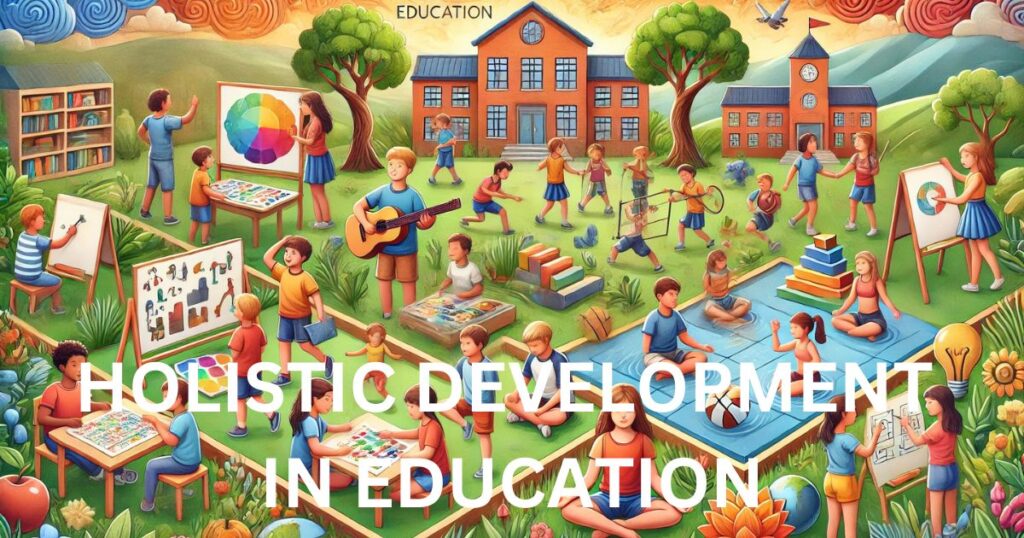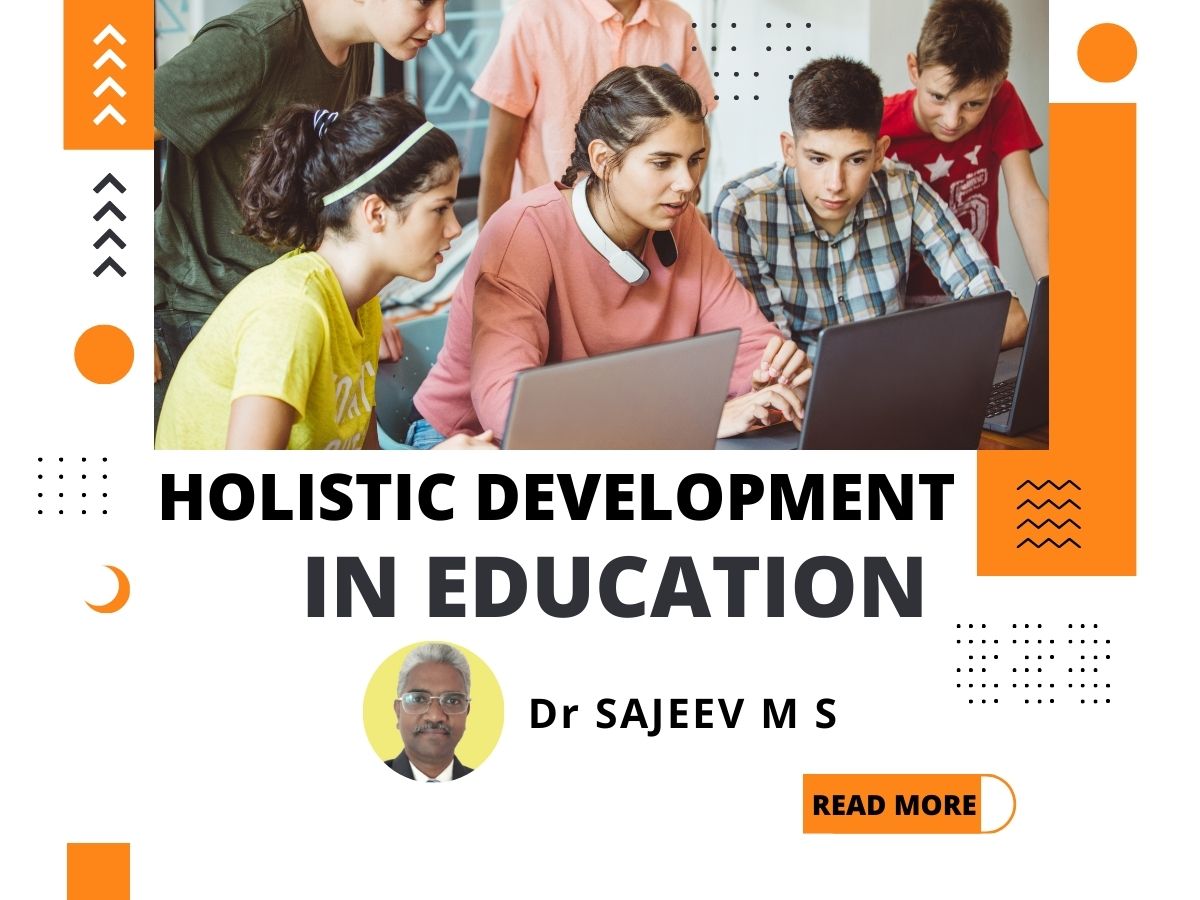Introduction
Holistic development in education refers to developing a child’s intellectual, mental, physical, emotional, ethical, creative, spiritual, artistic, and social abilities. Holistic development prepares children to face the demands and challenges of daily life, and these skills are critical for success in professional fields.
The Significance of Holistic Development
Holistic development in education is an important component that focuses on a child’s overall growth and well-being. It includes intellectual, physical, emotional, and social development, among other things. Educators use a holistic approach to give pupils a balanced and well-rounded learning experience. This includes academic learning and the development of life skills, character development, and the promotion of a sense of community and responsibility.
In the world of education, holistic development and fulfillment is an extremely important concept to consider, which encompasses the overall growth and well-being of a child in education, rather than learning solely academic excellence. Holistic development has many different aspects, such as cognitive (intellectual), physical, social, emotional, and moral development, thereby providing the opportunity for students to be prepared for life outside the classroom.
Holistic education, in a nutshell, creates a balanced and well-rounded learning experience, not only developing cognitive abilities but also values, life skills, and interpersonal friendships/relationships.
Teachers are an integral part of implementing a holistic approach to education that incorporates a multi-faceted task/approach and encourages different types of teaching strategies to meet the different areas of development in a child.
Educators often create opportunities for cognitive learning with problem-solving, critical thinking, and original exploration, while students elbow physical development in sports, yoga, and outdoor activities to improve aspects of health and improve my coordination in different physical activities. Also, social and emotional developments are important aspects created through self-awareness, self-control, teamwork, and effective and appropriate communication.
Another important aspect of holistic education is character development, which focuses on a child’s ethical values and responsibility and engagement in moral education, mindfulness practices, and/or other extracurricular activities that instill values of leadership and collaboration.
Moreover, fostering a community sense and the idea of social responsibility invites students to think more broadly about our society and their place in it. Focused on developing all domains of well-being, holistic education provides students a path to become well-rounded people, ready to navigate changes and to contribute to society while also living a full life with confidence and integrity
(Learn more about the benefits of holistic education on Edutopia)
A Comprehensive Perspective

Holistic development in education is a concept that highlights the need to consider the full child in the educational process, including their physical, emotional, social, and cognitive well-being. It acknowledges that a child’s development is intertwined and that all parts of their development should be nourished and supported.
(More holistic learning strategies on UNESCO’s Learning Portal)
Holistic Development and Student Growth
Holistic development in education is critical for students’ entire growth and well-being. It includes not only academic accomplishment but also physical, emotional, and social growth. Educators hope to produce well-rounded individuals who can prosper in all facets of life by employing a holistic approach.
(Read about how holistic development influences student outcomes on Brookings Institution)
The Aim of Holistic Education

Holistic development in education refers to a complete strategy for fostering students’ physical, intellectual, emotional, and social growth. It goes beyond the typical emphasis on academic accomplishment to acknowledge the necessity of developing well-rounded persons capable of navigating the challenges of life.
(Check out insights on fostering resilience and empathy in students at MindShift)
The Multifaceted Approach
Holistic development in education is a multifaceted strategy that strives to encourage all aspects of a student’s development. It understands that education is about developing social, emotional, physical, and creative talents as well as intellectual brilliance.
(For more practical tools, visit Collaborative for Academic, Social, and Emotional Learning (CASEL))
Individuality and Holistic Development
Every child has personality, interests, preferences, values, attitudes, strengths, and weaknesses. The educational curriculum must be able to assist all children in finding their unique place in the world through their uniqueness. The holistic development of a child is critical in the modern world.
(You can discover inclusive educational practices at Education World)
Essential Components of Holistic Development

Cognitive Development
Cognitive development is concerned with the brain and its development, i.e., the intelligence of a child. These young minds can learn a lot more if they are properly guided.
(You can explore games and activities for cognitive development on Scholastic)
Linguistic Development
Language and speech are essential components of the educational process. Speaking and articulating effectively are essential skills in today’s world. Linguistic development is the most important aspect of overall development.
(Find resources to support linguistic skills on National Literacy Trust)
Social-Emotional Development
The development of a child’s emotional well-being, identity, cooperation, independence, and interaction skills is referred to as social-emotional development.
(Learn about SEL activities for kids at EdSurge)
Physical Development
Physical development can be divided into two categories:
- Gross Motor Skills: These involve using large muscles and body parts, like the arms and legs.
(For more physical activity ideas, visit Active For Life)
- Fine Motor Skills: These refer to small muscle movements in parts of the body like the fingers, toes, and feet.
- (Please discover fine motor activities for kids on Occupational Therapy Tools
You may like to read:- Diversity in the Classroom | How to Foster Inclusion?
- How to Dominate Your Online Business With 5 Proven Digital Marketing Strategies
- How to Cultivate Critical Thinking and Problem-Solving Skills in Classroom
- Top Proven Mental Health Strategies for Schools in 2025-26
- Time Management for Teachers: How to Plan, Prioritize, and Perform Better
- How Parental Involvement in Education Shapes a Child’s Growth and Success



